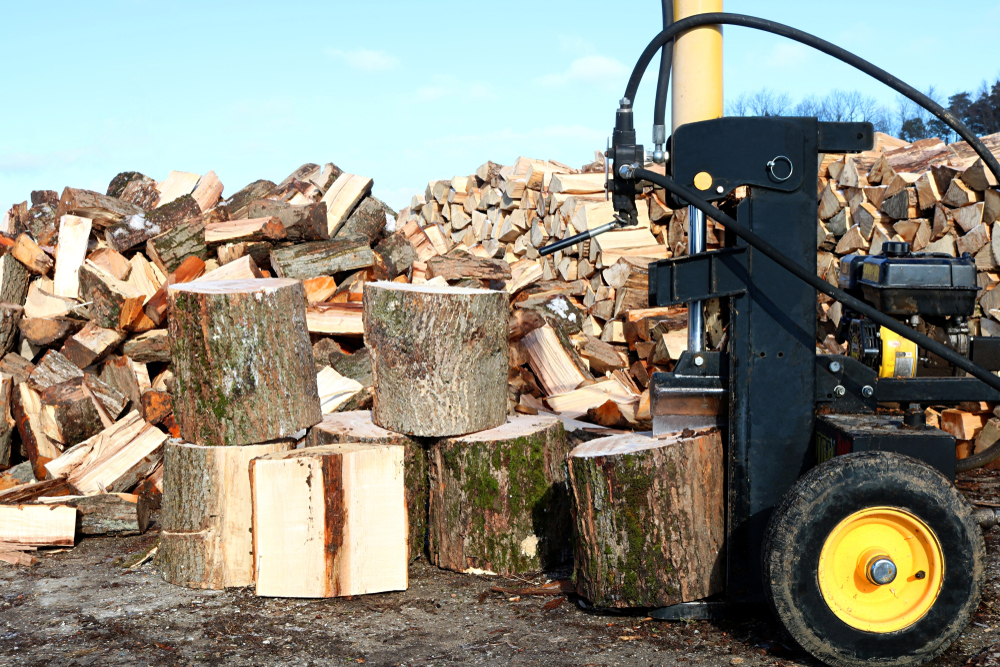Mastering Wood Splitting: An In-Depth Guide to Efficient and Safe Wood Splitting Techniques
The task of splitting wood, whether for heating your home or for a cozy campfire, can be quite daunting. However, with the right wood splitter and techniques, this task can become much easier and more efficient. This comprehensive guide will walk you through the different types of wood splitters, efficient wood splitting techniques, and safety measures to keep in mind.
Stepping into the world of lumber and woodworking, let's talk about a tool that is absolutely indispensable - the wood splitter. This efficient piece of equipment is a game-changer in the realm of timber processing, making the daunting task of splitting logs an absolute breeze.
A wood splitter, also known as a log splitter, is designed to chop wood into pieces suitable for firewood or other timber needs. It works by using a hydraulic or mechanical force to drive a log into a stationary blade or a rotating cone, splitting it into halves or quarters. The result? Perfectly-sized pieces of timber, ready to be used in your fireplace, wood-burning stove or even for crafting fine furniture.
But the benefits of a wood splitter extend beyond just convenience. It also promotes safety and efficiency. No more swinging an axe and risking injury, or spending countless hours on manual labour. A good wood splitter can handle logs of varying sizes, and some models can split a log in less than a second!
Understanding Wood Splitters:
Wood splitters, also known as log splitters, are incredibly useful tools designed to split firewood from softwood or hardwood logs that have been pre-cut into sections. They can significantly reduce the amount of time and effort it takes to split wood, especially compared to traditional methods like using an axe or a maul.
Types of Wood Splitters:
There are primarily four types of wood splitters: manual, electric, gas-powered, and hydraulic.
- Manual wood splitters are the most affordable and portable option, but they require the most physical effort.
- Electric wood splitters are more powerful than manual ones and are still relatively portable and quiet. They are ideal for splitting small to medium-sized logs.
- Gas-powered wood splitters are the most powerful and can handle larger logs, but they are also the most expensive and least portable.
- Hydraulic wood splitters can be either electric or gas-powered. They use hydraulic force to split the wood, making them incredibly powerful and efficient.
Efficient Wood Splitting Techniques:
Efficiency in wood splitting not only saves time but also minimizes physical strain. Here are a few techniques to consider:
- Stand the log upright: This gives you a stable base for splitting and ensures the force of the splitter is directed downward.
- Use a crisscross pattern: Instead of splitting the log straight down the middle, use a crisscross pattern. This helps to break the wood fibers apart more easily.
- Take advantage of the wood's natural splits: If the log already has natural splits or cracks, use them to your advantage.
Safety Measures for Wood Splitting:
Safety should be a top priority when using a wood splitter. Here are some safety tips to keep in mind:
- Wear appropriate personal protective equipment (PPE), including safety glasses, sturdy gloves, and close-toed shoes.
- Keep your work area clean and free of tripping hazards.
- Never operate a wood splitter alone. Always have someone nearby in case of an emergency.
- Always read and follow the manufacturer's instructions.
Choosing the Right Wood Splitter for You:
When choosing a wood splitter, consider factors like your budget, the size and type of logs you'll be splitting, and how frequently you'll be using the splitter. Manual splitters are perfect for occasional use and small logs, while a hydraulic splitter might be necessary for larger logs and frequent use.
In conclusion, mastering the art of wood splitting requires understanding the different types of wood splitters, learning efficient splitting techniques, and always prioritizing safety. With the right wood splitter and techniques, you can make the task of splitting wood quicker, easier, and safer.
Remember, the key to efficient wood splitting lies not just in the tool but also in the technique and safety measures. Choose the right wood splitter for your needs and employ the techniques and safety measures outlined in this guide to master the art of efficient and safe wood splitting.








0 comments